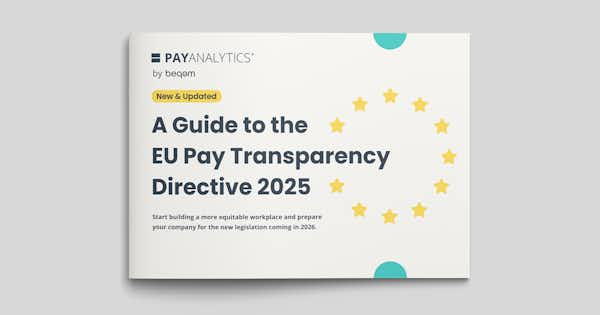A Guide to the EU Pay Transparency Directive 2025 | Download our eGuide for free
Practical Advice for Pay Equity Challenges: Margrét Bjarnadóttir Presents at Total Rewards '24 Conference
The WorldatWork Total Rewards conference has been a great way for HR professionals and organizational leaders to learn how to create a workplace that attracts, grows, and retains the talent they need. This year’s conference is coming up soon, May 20-22 in Cincinnati, Ohio. Our co-founder Margrét Bjarnadóttir will give two presentations focusing on two real-world pay equity challenges: closing a workplace pay gap and complying with the EU Pay Transparency Directive.

You’ve Spotted a Pay Gap: Now What?
🗓️ Tuesday, May 21, 10:15 a.m. EST
This talk is based on Margrét’s years of experience helping our clients and on the research she has been conducting with our co-founder David Anderson and their research partner David Gaddis Ross. (For an overview of this research, see their Harvard Business Review article published earlier this year.)
As Margrét has seen, employers often adopt an intuitive approach to closing a pay gap, which basically involves adjusting the pay of “outlier” employees. However, this approach doesn’t address the root causes of the pay gap. This means that the gap may end up re-emerging, and the whole salary structure is vulnerable to salary compression.
In her presentation, Margrét talks about a better way to close the pay gap using a structured approach to pay equity analysis. This involves adjusting the pay of the entire distribution by using key performance indicators. This approach closes pay gaps long-term without salary compression and makes for a more equitable and robust pay structure. Margrét’s talk will include a conversation about participants’ pay equity successes and barriers, as well as time for questions.
Decoding the European Pay Transparency Directive: Navigating Compliance and Preparing for Impact
🗓️ Wednesday, May 22, 10:15 a.m. EST
The European Pay Transparency Directive will require EU employers to change the way they deal with pay gaps and the way they communicate about pay. How can employers prepare for these changes?
For years, Margrét and the whole PayAnalytics team have been tracking the requirements of the EU Directive as they were proposed, adjusted, and adopted. Margrét’s presentation will provide:
- An overview of the directive’s requirements.
- An idea of how Member States will implement those requirements and of what aspects of the directive are still being defined.
- Guidance on building a solid foundation for pay equity and transparency.
- Concrete action steps and checklists.
- Informative case studies of how employers are preparing to meet the directive.
If you’re going to Cincinnati, mark your conference calendar and join Margrét for one or both of these sessions. You can also stop by booth #202 to meet with us during the conference. We’d love to see you there!
And if you can’t make it to Total Rewards this year, we invite you to book an online demo with us. You may also want to check out our research team’s article on structured pay equity analysis or our pocket guide or free e-book on the EU Pay Transparency Directive.





